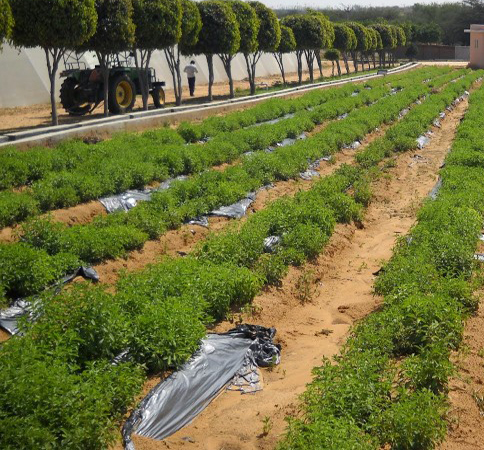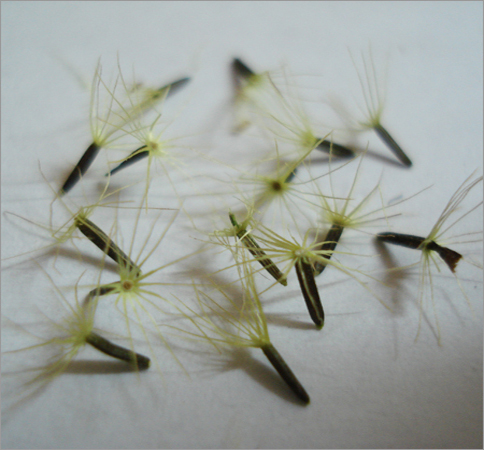STEVIA PLANTS AND SEEDS
Stevia Plant

Stevia Plantation
Stevia, (Stevia rebaudiana), also called as a sweet leaf (Madhu Tulsi), flowering plant in the aster family (Asteraceae), grown for its sweet-tasting leaves. The plant is native to Paraguay, where it has a long history of use by the Guaraní people. The leaves contain a number of sweet-tasting chemicals known as steviol glycosides, which can be used fresh or dried to sweeten beverages or desserts or can be commercially processed into powdered noncaloric sweeteners.
Steviol glycosides, particularly the chemicals stevioside and rebaudioside A, can be more than 300 times sweeter than table sugar and are non glycemic (i.e., they do not affect blood glucose levels). Proved as a healthier alternative to sugar, stevia sweeteners grew in popularity worldwide in the early 21st century.
Stevia plant is a tender perennial herb that reaches 30.5-80 cm (1-2.5 feet) in height. The oblong aromatic leaves are 2.5 cm (1 inch) long with a prominent midrib and are arranged oppositely along the stems. The small tubular flowers have five white petals and are borne in terminal clusters, the flowers are usually removed to improve the flavour of the leaves. Germination from seed is difficult, and most plants are grown from cuttings. The plant requires rich well-drained soil and thrives in warm humid climates.
Stevia leaves have been used for more than 1,500 years by the Guaraní people. Traditionally, the plant was used to sweeten yerba maté and other tea’s and it had a number of applications in folk medicine. The first scientific record of the plant dates to 1899, when Swiss botanist Mosè Giacomo Bertoni announced his discovery of the sweet-tasting plant and named it Eupatorium rebaudianum. The European Union approved stevia sweeteners ‘SAFE’ in 2011.

Sweet Leaf Stevia Rebaudiana Seed
Stevia Rebaudiana is a plant species in the genus Stevia of the sunflower family (Asteraceae), commonly known as candy leaf, sweet leaf, sweet leaf, or sugar leaf. Stevia is a tender perennial native to the parts of Brazil and Paraguay that favors humid, wet environments, although the root does not tolerate standing water.
The greatest challenge with ‘Stevia’ is its germination. Once plants are established, they will grow well in hot weather. Various approaches are available and one can optimize methods with the available resources.
Stevia Rebaudiana seeds are very small and very light in weight. Stevia seeds are either dark brown or black. Stevia seeds require consistently moist, very warm soil to germinate and they will rot if the soil is wet and cold. It can be grown in well-drained red soil and sandy loam soil. The soil should be in the pH range of 6.5-7.5. Saline soils are also avoided to cultivate this plant.
Similarly, black cotton soils with very heavy clay content are also avoided. It is mandatory that before planting, each and every soil sample is tested.
From the Rebaudiana seeds, stevia plant is obtained which is a sub-tropical, frost sensitive perennial. Today, it is widely used in different countries and it has gained attention among diabetics and those who cannot take sugar.
Stevia leaves can be used fresh or dried. The leafs of the plant are 20-30 times sweeter than cane sugar so it gives the user an intense feeling of sweetness on the taste buds but with no increase in blood sugar levels. Stevia is free of calories .The chemical compounds that produce its sweetness are various steviol glycosides (mainly stevioside and rebaudioside), which have 250–300 times (approx.) the sweetness of sugar.
